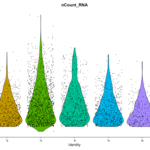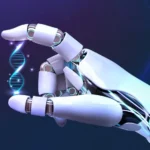In recent years, the world has seen a rapid increase in the generation and use of data. But what is the trend of data in science? The trend shows that data is becoming the backbone of scientific research. From biology to physics, every field is embracing data-driven approaches to make discoveries, solve problems, and advance knowledge.
The Rise of Big Data in Science
One of the biggest trends in science is the rise of big data. Big data refers to the vast amounts of information generated every day. This data comes from various sources such as sensors, social media, experiments, and more. The sheer volume of this data is both an opportunity and a challenge for scientists.
For example, in Big Data Genomics, scientists are now able to sequence entire genomes in a matter of hours. This generates terabytes of data that must be analyzed to find meaningful patterns. Tools like machine learning and artificial intelligence (AI) are becoming essential in processing and interpreting this data.
The Role of Artificial Intelligence
AI is playing a crucial role in the trend of data in science. AI algorithms can sift through large datasets quickly and efficiently. They can identify patterns that would be impossible for humans to detect.
In drug discovery, for example, AI models can predict how different molecules will interact with biological targets. This can speed up the process of finding new drugs and reduce the cost of research. In climate science, AI is being used to model complex weather systems and predict climate changes with greater accuracy.
Data Science and Interdisciplinary Research
Another trend of data in science is the growing importance of interdisciplinary research. Data science, which involves analyzing and interpreting complex data, is now intersecting with fields like biology, chemistry, and physics. This cross-disciplinary approach is opening new avenues for research and innovation.
For instance, in healthcare, data science is being used to analyze patient records, genetic information, and treatment outcomes. By combining insights from biology, medicine, and data science, researchers can develop personalized treatments and improve patient care.
Real-World Example: The Human Cell Atlas
A great example of what is the trend of data in science is the Human Cell Atlas project. This global initiative aims to map every cell type in the human body. Scientists are using single-cell RNA sequencing (scRNA-seq) to analyze millions of cells, generating vast amounts of data.
This project is a prime example of how big data, AI, and interdisciplinary research are coming together. The data generated by the Human Cell Atlas is helping researchers understand how cells function, how diseases develop, and how they can be treated more effectively.
The Importance of Data Sharing and Collaboration
As data becomes more central to scientific research, the importance of data sharing and collaboration is also growing. Scientists are recognizing that to tackle complex problems, they need to work together and share their data.
This trend is evident in the way researchers responded to the COVID-19 pandemic. Scientists from around the world shared their data on the virus, its spread, and potential treatments. This collaborative approach led to the rapid development of vaccines and treatments.

The Challenges of Data Management
While the trend of data in science is bringing many benefits, it also presents challenges. Managing large datasets requires sophisticated infrastructure and tools. Scientists need to ensure that their data is stored securely, is easily accessible, and can be shared with others.
There are also ethical considerations when it comes to handling sensitive data. For example, in medical research, patient data must be anonymized and handled with care to protect privacy.
The Future of Data in Science
Looking ahead, what is the trend of data in science likely to be? The future will likely see even more integration of data into scientific research. Fields like quantum computing and synthetic biology are poised to generate even larger datasets.
As these trends continue, the role of data scientists will become increasingly important. They will need to develop new tools and methods to analyze and interpret data. Collaboration between scientists, data experts, and ethicists will be key to addressing the challenges and maximizing the benefits of data in science.
Real-World Example: Climate Change Research
Another real-world example of what is the trend of data in science is climate change research. Scientists are using data from satellites, weather stations, and ocean buoys to monitor changes in the Earth’s climate. This data helps them understand the effects of global warming, predict future changes, and develop strategies to mitigate its impact.
AI and machine learning are again playing a crucial role here. These technologies are used to model climate systems, predict extreme weather events, and analyze the impact of human activities on the environment.
The Impact of Data on Scientific Publishing
Data is also changing the way scientific research is published and shared. Traditionally, research findings were published in journals after a lengthy peer-review process. But with the trend of data in science, there is a growing demand for open access to data and research results.
Platforms like arXiv and bioRxiv allow scientists to share their findings before they are peer-reviewed. This speeds up the dissemination of knowledge and allows other researchers to build on the work. Open data initiatives are also encouraging researchers to share their raw data, making it easier for others to verify results and conduct new analyses.
Data Literacy: A Crucial Skill for Scientists
As data becomes more integral to science, data literacy is becoming a crucial skill for scientists. Understanding how to collect, analyze, and interpret data is now essential in almost every scientific field.
Educational institutions are recognizing this trend and are incorporating data science into their curricula. Programs that combine traditional scientific disciplines with data science are becoming more common. This trend ensures that the next generation of scientists will be equipped to handle the data challenges of the future.
Real-World Example: Precision Medicine
Precision medicine is another area where the trend of data in science is having a profound impact. This approach to treatment considers an individual’s genetic makeup, environment, and lifestyle to tailor medical care specifically for them.
Genomic data plays a key role in precision medicine. By analyzing a patient’s genome, doctors can identify mutations that may cause disease. They can then design treatments that target these specific mutations, improving the chances of a successful outcome.
For example, in cancer treatment, data from genomic sequencing is used to identify mutations in tumor cells. This information helps doctors choose the most effective treatment, whether it’s a specific drug, radiation, or surgery.

The Role of Citizen Science
Citizen science is a growing trend where non-professional scientists contribute to research by collecting and analyzing data. This trend is becoming more popular as technology makes it easier for people to participate in scientific research.
For instance, in environmental science, citizens can use smartphone apps to report observations of wildlife, pollution, or weather conditions. This data is then used by scientists to monitor ecosystems, track changes, and develop conservation strategies.
Citizen science projects are also contributing to astronomy, where amateur astronomers help discover new celestial objects, and to healthcare, where patients share their health data to contribute to research on chronic diseases.
Ethical Considerations in Data Science
With the increasing reliance on data in science, ethical considerations are becoming more important. Scientists must ensure that their use of data respects privacy, avoids bias, and is transparent.
For example, in AI research, there is a risk that algorithms could reinforce existing biases if they are trained on biased data. Researchers must be vigilant in ensuring that their models are fair and that they do not discriminate against any group.
In medical research, the use of patient data must be carefully managed to protect privacy. Informed consent, data anonymization, and secure data storage are essential practices to ensure that patient rights are respected.
What is the Trend of Data in Science? A Conclusion
In conclusion, what is the trend of data in science? It is clear that data is transforming every aspect of scientific research. From big data and AI to interdisciplinary collaboration and ethical considerations, data is at the heart of modern science.
As we explore what is the trend of data in science, it’s essential to consider the future. The data science topics for the next 10 years will likely focus on areas like AI-driven research, precision medicine, climate change modeling, and ethical data management. These topics will shape the way scientists approach complex problems, ensuring that data continues to drive innovation and discovery.



